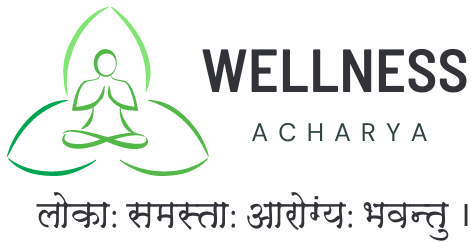Western medicine as we now know it lives in orbit around the pharmaceutical industry. Medical schools teach doctors how to match symptoms with prescriptions, hospitals negotiate with insurance companies based on the cost of drugs, and the race is ongoing to create the latest and greatest drug that will cure what ails ya.
The healers of today are no longer the heroes of old. The healers of today are trained, funded, and accountable to the pharmaceutical industry Today’s modern medical mafia has deceived us, is deceiving us, and will continue to deceive us if left unchecked. All in the name of profits.
First, it’s important to understand that most doctors receive gifts from Big Pharma in one form or another. A 2018 survey published in the Journal of General Internal Medicine found that nearly three out of four doctors have financial ties to Big Pharma. The vast majority of these relationships were with representatives of prescription drug or medical device manufacturers. Gifts included drug samples, meals, and payment for consulting or advisory roles.
Since 2013, federal law in US has required that payments to doctors by medical device and pharmaceutical companies be publicly reported. The database (which you can access assesed) has published over 11.5 million records between August 2013 and December 2017, reflecting $8.4 billion in gifts and payments.
According to the study, “Free samples are used as a marketing tool and have been linked to prescribing of high-cost, brand-name drugs over lower-cost generic alternatives.”Financial connections between physicians and industry remain a prevalent force affecting prescribing practices and health care costs.
And while health insurance often shields patients from the bulk of these inflated prices, they end up being passed down in the form of higher rates and higher deductibles. And who profits? Big Pharma and the medical device industry.
Remember Purdue Pharma, the makers of OxyContin? In 2015 they paid nearly $12 million to doctors not associated with research studies.
We’ve talked about how doctors can profit from chemotherapy, and the lengths pharmaceutical companies will go to promote their products. Medical schools focus almost exclusively on pharmaceutical and surgical intervention strategies used to reactively address health issues rather than alternative strategies to proactively prevent these diseases in the first place.
And why not? There’s far more money in prescription drugs and medical equipment than there is in holistic and homeopathic treatments. In a 2009 article by Dr. Art Van Zee, it was reported that Purdue Pharma conducted more than 40 national pain-management and speaker-training conferences at resorts in Florida, Arizona, and California. More than 5000 physicians, pharmacists, and nurses attended these all-expenses-paid symposia, where they were recruited and trained for Purdue’s national speaker bureau. This coincided with the launch of OxyContin.
It is well documented that this type of pharmaceutical company symposium influences physicians’ prescribing, even though the physicians who attend such symposia believe that such enticements do not alter their prescribing patterns.
From 2014 to 2019, the FDA approved nearly 150 new anticancer drugs. And although this may seem like good news, cancer patients may want to hold their applause. As it turns out, a significant portion of these approvals – nearly 1 in 5 – were based on clinical trials that don’t prove the effectiveness of the drugs.
A study published last month in JAMA Oncology evaluated 143 cancer drugs approved by the FDA between 2013 and 2018.
Analysts found that 17% used “suboptimal control arms” and showed no benefit over standard therapies. In other words, many anticancer drugs approved by the FDA haven’t shown any real benefit to patients.
To better understand the implications of the new analysis, it’s important that we first understand the process for drug approval.
Most drugs seeking FDA approval undergo something called randomized clinical trials to prove their efficacy. This means that participants are separated randomly into different groups to compare the effects of different drugs.
In a randomized clinical trial, the group that does not receive the experimental treatment is called the control arm. The control arm may receive no treatment, a placebo, or the accepted standard of care.
But what happens when new drugs are tested against inferior therapies? Or therapies that are rarely used? This is called a “suboptimal” control arm, and it essentially nullifies any findings of the study. When the control arm is suboptimal, there is no scientific evidence that the new drug offers any benefit over the standard-of-care.
What this means is that the FDA is regularly approving new anticancer drugs that may not be any better than the standard drugs already in use. But whenever a new drug is approved, company stock goes up and people get paid. And as long as the new drug outperforms the control arm, it’s off to market.
Cancer patients deserve better, and companies should not be allowed to set their own parameters for success. According to the study’s lead author, Talal Hilal:
The take-home message from our analyses is that FDA approval doesn’t automatically make a new drug better than treatments doctors are currently using… People being treated for cancer must often withstand physical and financial toxicity. It is only right that any new treatments offered to them must have been proven to be better than what is already available.”
According to sciencemag.org,
“An analysis of pharma payments to 107 physicians who advised FDA on 28 drugs approved from 2008 to 2014 found that a majority later got money for travel or consulting, or received research subsidies from the makers of the drugs on which they voted or from competing firms.”
The reason that the FDA is so corrupt may have to do with its employees. In July of 2019, former FDA commissioner Scott Gottlieb took on a new position – on the board of pharmaceutical giant Pfizer.
Pfizer is a massive company worth billions. Since Gottlieb was nominated as FDA commissioner, Pfizer’s market value has exploded from $200 billion to $240 billion. For the first year as commissioner, Gottlieb was forced to recuse himself from making decisions involving nearly 20 pharmaceutical companies with whom he had relationships. These companies included Vertex Pharmaceuticals, GlaxoSmithKline, and Bristol-Myers Squibb, among others.

